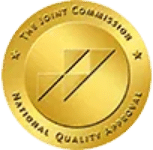In a society where the spectrum of wealth spans vast disparities, the intricate relationship between socioeconomic status and substance use becomes a focal point for both public health officials and social researchers. The question that often surfaces in discussions about affluence is: what’s the connection between wealth and drug use? This query delves into the heart of how economic status influences the prevalence of substance abuse disorders, including drug and alcohol dependence, and the broader implications for mental health.
We aim to shed light on the multifaceted relationship between wealth and drug use, exploring how factors like average household income, higher risk of a substance use disorder, and the positive value placed on a college degree intersect with the realities of alcohol and drug abuse. As we navigate the terrain of substance misuse across different socioeconomic strata, our goal is to offer insights and guidance for those seeking substance abuse treatment and to foster a deeper understanding of the societal underpinnings of substance use disorder.
Wealth and Its Impact on Substance Use

The impact of wealth on substance use is a topic that invites scrutiny into the paradoxes of affluence. While an average household income provides for basic needs and beyond, it may also inadvertently contribute to a higher risk of drug abuse. This is not to suggest that wealth directly causes substance abuse but instead that it can create environments where drug and alcohol use are more readily accessible and socially acceptable.
In communities with substantial financial resources, there is often a greater availability of illicit and recreational drugs and a culture that may normalize or even glamorize recreational drug use. This normalization is a significant risk factor, particularly for adolescents and those in early adulthood still developing coping mechanisms and personal identities. The presence of wealth can sometimes lead to a sense of invulnerability or a belief that financial means can mitigate the consequences of drug use.
Drug Use Across Socioeconomic Strata
Drug use does not discriminate; it permeates through all layers of socioeconomic strata, albeit in different manifestations. The connection between wealth and drug use is complex and often counterintuitive. While lower-income communities grapple with the availability of illicit drugs and the challenges of financial instability, affluent societies may contend with a hidden epidemic of substance misuse masked by a veneer of prosperity.
In examining the socioeconomic landscape, it becomes clear that drug and alcohol dependence is not solely a byproduct of poverty or lack of education. Affluent children and adults may engage in substance use behaviors that are as risky, if not riskier, than those in economically challenged areas. The availability of financial resources can lead to greater access to a variety of drugs, from prescription medications to high-grade marijuana. It can facilitate habits such as binge drinking and experimental drug use.
Understanding drug use across socioeconomic strata involves acknowledging the unique challenges and risk factors present at each level of economic status. It requires a comprehensive approach to substance abuse treatment that is sensitive to the nuances of each individual’s background, whether they come from a family with a high annual income or one that struggles to make ends meet.
The Paradox of Affluence: Does Wealth Contribute to Drug Use?
In affluent communities, the means to procure drugs are often readily available, and the privacy afforded by wealth can make substance misuse less visible to the public eye. The association between higher household income and increased substance use is not necessarily causal, but there is a correlation that cannot be ignored. For instance, the leisure time and disposable income available to wealthy children and adults can lead to experimentation with illicit drugs and alcohol at a younger age, potentially developing into substance use disorders.
Moreover, the stress of maintaining a particular lifestyle that can accompany a life of comfort may drive some toward substance use as a form of escape or thrill-seeking behavior. This is compounded by the fact that affluent individuals often have the financial means to hide their substance abuse through private care or by avoiding legal repercussions, allowing the problem to persist unaddressed.
However, it’s important to note that wealth is just one of many risk factors and does not doom individuals to substance misuse. Many people with substantial financial resources lead healthy, substance-free lives. It’s the combination of wealth with other factors—such as mental health issues, family history, and social environment—that can increase the risk.
Cultural and Social Factors Linking Wealth to Drug Use

The tapestry of cultural and social factors that interweave wealth with drug use is intricate and telling. In societies where affluence is often celebrated, the hidden narrative of substance misuse can be particularly poignant. The cultural milieu of the wealthy often comes with its own set of social expectations and pressures that can influence substance use behaviors.
To combat the negative impact of these cultural and social factors, there needs to be a concerted effort to promote healthy lifestyles and coping mechanisms within affluent communities. This includes fostering environments where mental health is prioritized and the risks of substance misuse are openly discussed. It also involves creating support systems that recognize the unique pressures individuals face in these communities and offer targeted interventions when necessary.
Social Expectations and Pressure Among the Affluent
Within the echelons of wealth, social expectations and pressures can exert a profound influence on individual behaviors, including the use of drugs and alcohol. The affluent are often held to high standards of success and achievement, and the weight of these expectations can lead to significant stress and anxiety. To cope with these pressures, some individuals may turn to substance use as a temporary escape from the demands of their social sphere.
Accessibility and Exposure to Drugs in Wealthier Demographics
Accessibility to various substances is markedly higher in wealthier demographics, where financial resources are less of a barrier. This increased access can lead to a higher exposure to both legal and illicit drugs, as well as a broader range of substance use behaviors. The ease of obtaining high-quality drugs, coupled with the privacy that wealth can afford, creates an environment where drug use can become a hidden yet pervasive issue.
In these affluent circles, there is often a silent crisis of substance misuse that goes unaddressed. The ability to quickly acquire drugs—from prescription medications to designer drugs—can lead to a normalization of drug use and an underestimation of its risks. For adolescents and young adults in these communities, the visibility and availability of substances can significantly influence their perceptions and attitudes toward drug use.
The Role of Education and Awareness in Wealthy Societies
Parental education and awareness play pivotal roles in wealthy societies when it comes to addressing substance use. In these communities, where the means for treatment and prevention are often available, the focus must shift to utilizing these resources effectively. Educational programs tailored to the needs of affluent families can demystify substance use disorders and dismantle the stigma that often surrounds them.
Awareness campaigns can highlight the fact that substance abuse does not discriminate by economic status and that even those with substantial financial resources are not immune. They can also promote the understanding that drug and alcohol dependence are medical conditions requiring professional treatment, not moral failings.
The Impact of Parental Guidance and Peer Influence
Parental guidance is crucial in shaping young individuals’ attitudes toward substance use. In affluent households, parents can set a precedent by discussing the risks associated with drug and alcohol use and by being role models for healthy behavior. Peer influence is also strong during adolescent years; thus, fostering communities where substance misuse is not normalized can help in curbing the initiation into drug use.
Opioid Epidemic: A Cross-Socio Economic Crisis
The opioid epidemic has shattered the myth that drug addiction is confined to any one socioeconomic group. Wealthy individuals are just as susceptible to opioid misuse, often beginning with prescription painkillers. Addressing this crisis requires a cross-socioeconomic strategy that includes both prevention and treatment, recognizing that opioid addiction is a pervasive issue that transcends income levels.
Alcohol Use in High-Income Groups
Alcohol use in high-income groups can often be a social activity, but it has the potential to turn into alcohol abuse or addiction. Recognizing the signs of alcohol dependence and understanding that it can be as much of a problem in wealthy communities as in any other is vital. It’s important to foster environments where moderation is practiced and encouraged.
Stigma and Denial of Drug Problems in High Socioeconomic Status
Stigma and denial are significant barriers to seeking help for drug problems in high socioeconomic status groups. Overcoming these barriers involves changing the narrative around substance misuse, emphasizing that addiction is a health issue that can affect anyone, regardless of their wealth or status.
Strategies for Addressing Drug Use in Affluent Communities
Developing effective strategies for addressing adult and adolescent substance use in affluent communities involves creating targeted prevention programs, increasing access to mental health resources, and ensuring that treatment options are discreet and accessible. It’s about providing support that respects the affluent’s unique challenges and privacy concerns.
Find Support and Resources for Overcoming Drug Addiction at Behavioral Health Centers

If you or someone you love is navigating the complexities of drug addiction, know that you are not alone, and help is within reach. Behavioral Health Centers offers a sanctuary for healing, providing comprehensive addiction and mental health treatment tailored to individual needs.
Whether you’re dealing with the challenges of alcohol addiction, prescription drug dependence, or illicit substance misuse, Behavioral Health Centers provides a continuum of care that can adapt to your unique situation. From initial detoxification to outpatient counseling and aftercare support, we’re dedicated to helping you regain control and rebuild a fulfilling, substance-free life. Call us today at 772-774-3872 to begin recovering from addiction.





